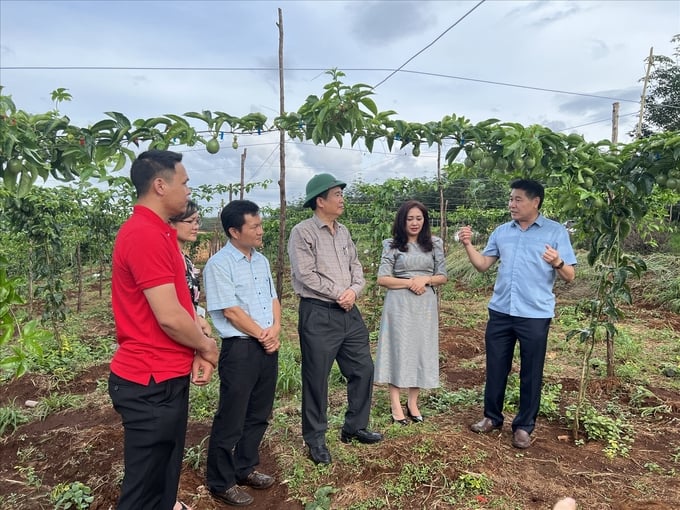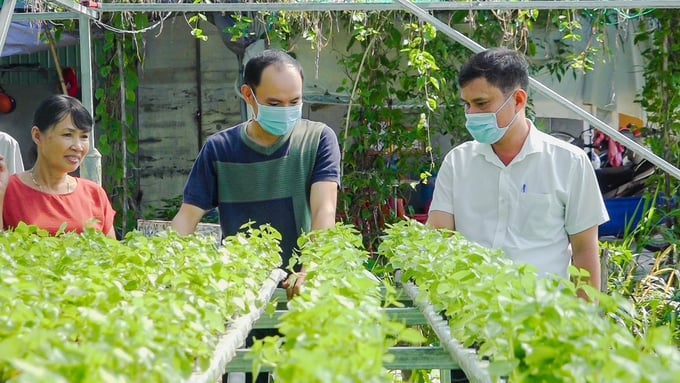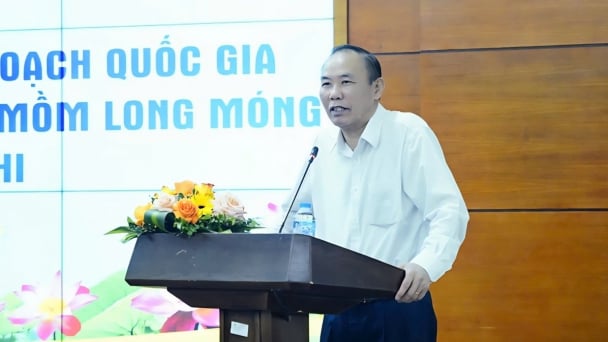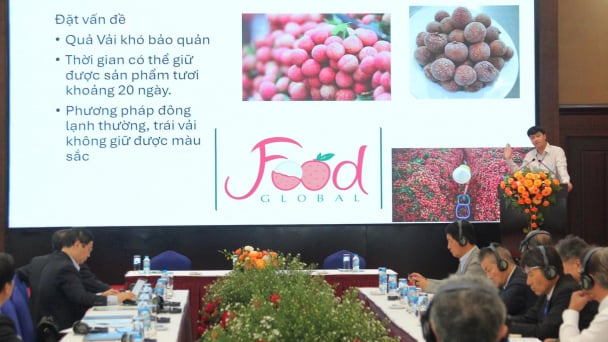June 18, 2025 | 03:28 GMT +7
June 18, 2025 | 03:28 GMT +7
Hotline: 0913.378.918
June 18, 2025 | 03:28 GMT +7
Hotline: 0913.378.918

In 2022, 26 community extension groups (2 groups/province) were established with the participation of 168 members. Photo: TL.
In 2022, the bold and breakthrough mark of Vietnam Agricultural Extension was implementing the Project "Strengthen the efficiency of agricultural extension activities based on consolidating the model of community agricultural extension groups". The Project has been implemented in 13 provinces in 5 major raw material regions, thereby establishing 26 community extension groups (2 groups/province) with the participation of 168 members. In addition, the provinces have established community agricultural extension groups to serve the scheme of material areas with a total of 123 groups, including 689 participants.
Community agricultural extension groups have been promoting their roles with a variety of activities, through supporting and advising farmers and cooperatives on agricultural extension, on science and technology transfer, supporting and advising farmer households and cooperatives on market development and production linkages along the value chain; consulting and guiding digital transformation in agricultural production.
In addition to 13 provinces participating in the pilot project, many more provinces have established community extension groups, such as Lang Son, Bac Giang, Hai Phong, Thai Nguyen, Hanoi, Binh Dinh, Binh Phuoc, and Quang. Nam, Ninh Thuan, Vinh Long, Hau Giang, Can Tho…
According to the assessment, initially, the model of community agricultural extension groups has helped improve the efficiency of the primary agricultural extension system, contributing to the restructuring of primary agricultural extension organizations associated with the commune to perform well the agricultural extension work, diversify agricultural extension activities to meet production needs and contribute to the implementation of political tasks in the locality.
Community extension has helped to restructure the primary agricultural extension organization on the principle of not changing the agricultural extension apparatus and staff. The project focuses on forming a community agricultural extension team based on the composition of agricultural extension officers working in the agricultural extension system of provinces, districts and communes, improving the capacity of the agricultural extension groups to fulfill their support tasks of cooperative support and market information and production linkages.

The model of community extension groups has helped improve the efficiency of the primary agricultural extension system. Photo: TL.
Community agricultural extension has also diversified the functions and tasks of grassroots agricultural extension. Expressly, the model of community agricultural extension groups has provided many roles to meet the needs of agriculture, farmers and rural development according to the following groups of activities: technical consulting, technology transfer, consulting support the formation of agricultural cooperatives, developing markets, linking production, consulting and guiding digital transformation in cooperatives...
Based on the essential foundations achieved in 2022 and 2023, the National Agriculture Extension Center will evaluate the establishment and operation of community extension groups to develop model regulations for replication in the coming period. Simultaneously, develop and issue guidelines for establishing and supporting community extension based on the experience and lessons of one year of operation to replicate nationwide.
In addition, the Center will continue to guide established community agricultural extension groups to perform their functions and tasks; organize training courses to improve capacity for community agricultural extension officers such as knowledge about cooperatives, markets and production linkages, knowledge about digital transformation, application of information technology in agricultural production, traceability, sales guidance and trading of agricultural products on e-commerce platforms... so that team members can well undertake the functions and tasks of the community agricultural extension team.
According to Dong Giao Foodstuff Export Joint Stock Company (DOVECO), for businesses to participate in community agricultural extension groups is the right policy of the Ministry of Agriculture and Rural Development.
The model is an important linkage to help businesses access and connect with farmers and raw material areas more efficiently. It helps to orient accurately and clearly for people about the type of tree following the market's needs.
In addition, businesses and agricultural extension partners have helped farmers in terms of technical progress and production of agricultural products that meet processing and export standards, creating a stronger relationship between farmers and businesses than ever.
Since then, DOVECO has suggested that ministries, departments and sectors need to replicate the model of community agricultural extension groups and provide financial support for community agricultural extension groups to operate more effectively. At the same time, organize more training courses for community extension workers in villages, increase the capacity of local agricultural extension officers, create depth for agricultural extension activities, and gradually strengthen the country's agricultural sector.
Translated by Ha Phuc

(VAN) The results of national programs are essential for establishing a contemporary livestock sector that is well-equipped to meet the demands of both domestic and international markets, with robust biosafety standards.

(VAN) The UNESCO Global Geopark revalidation of Non nuoc Cao Bang and the transition to a two-tier administrative model are presently undergoing a pivotal moment in Cao Bang, the northernmost province of Vietnam.
/2025/06/13/5330-2-004539_953.jpg)
(VAN) Changing policy mindset and removing investment barriers are urgent requirements to open up new development space for enterprises in the agricultural sector.

(VAN) The areas include the restoration of five million hectares of marine ecosystems.

(VAN) Dr. Le Van Nguyen, Director of the Institute of E-Commerce Management (ECM), emphasizes the potential for green development through the cultivation of fruit trees, particularly in provinces such as Son La.

(VAN) VAAS and numerous Vietnamese enterprises have signed cooperation agreements with Japanese partners to promote agricultural technology and trade connectivity.
/2025/05/29/5625-12-214801_567.jpg)
(VAN) Provincial mergers in the Mekong Delta promise to streamline administration, expand inter-provincial raw material areas, and foster close linkages in agricultural value chains, benefiting both businesses and cooperatives.